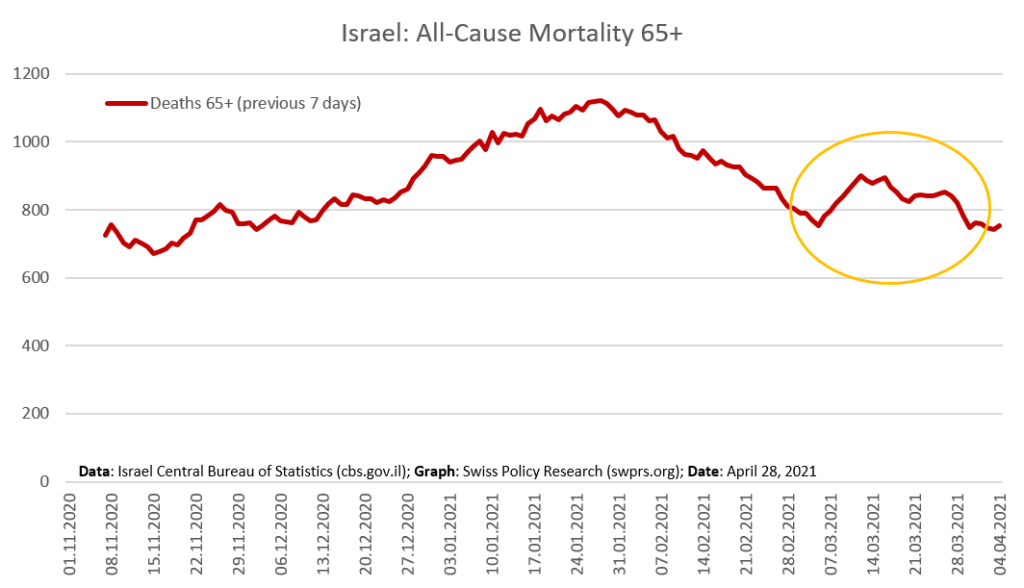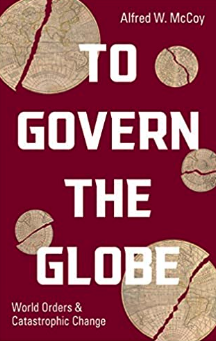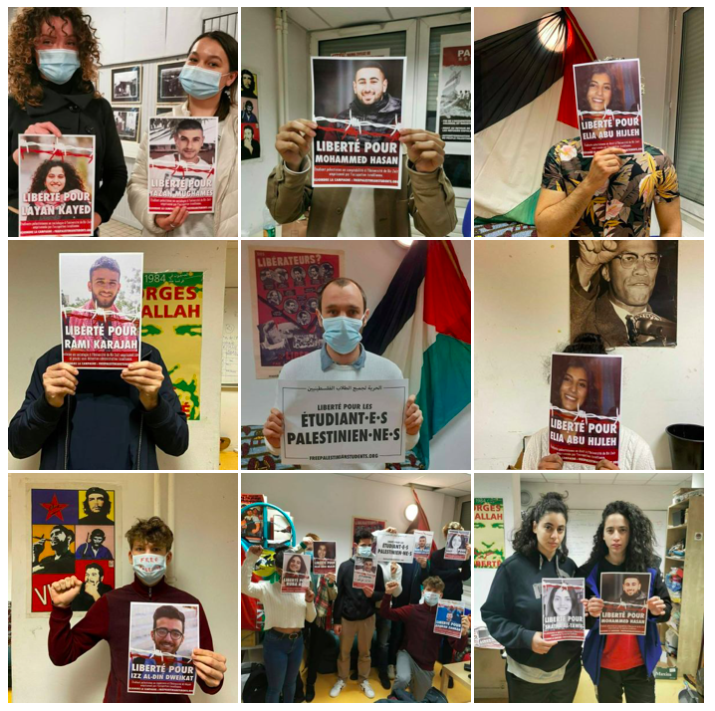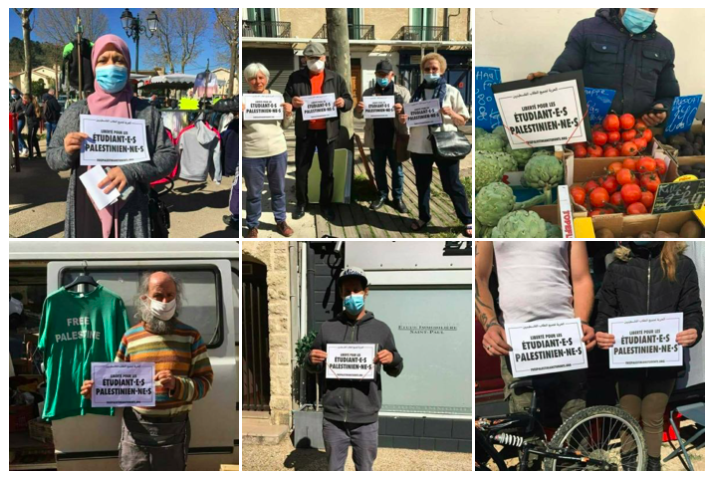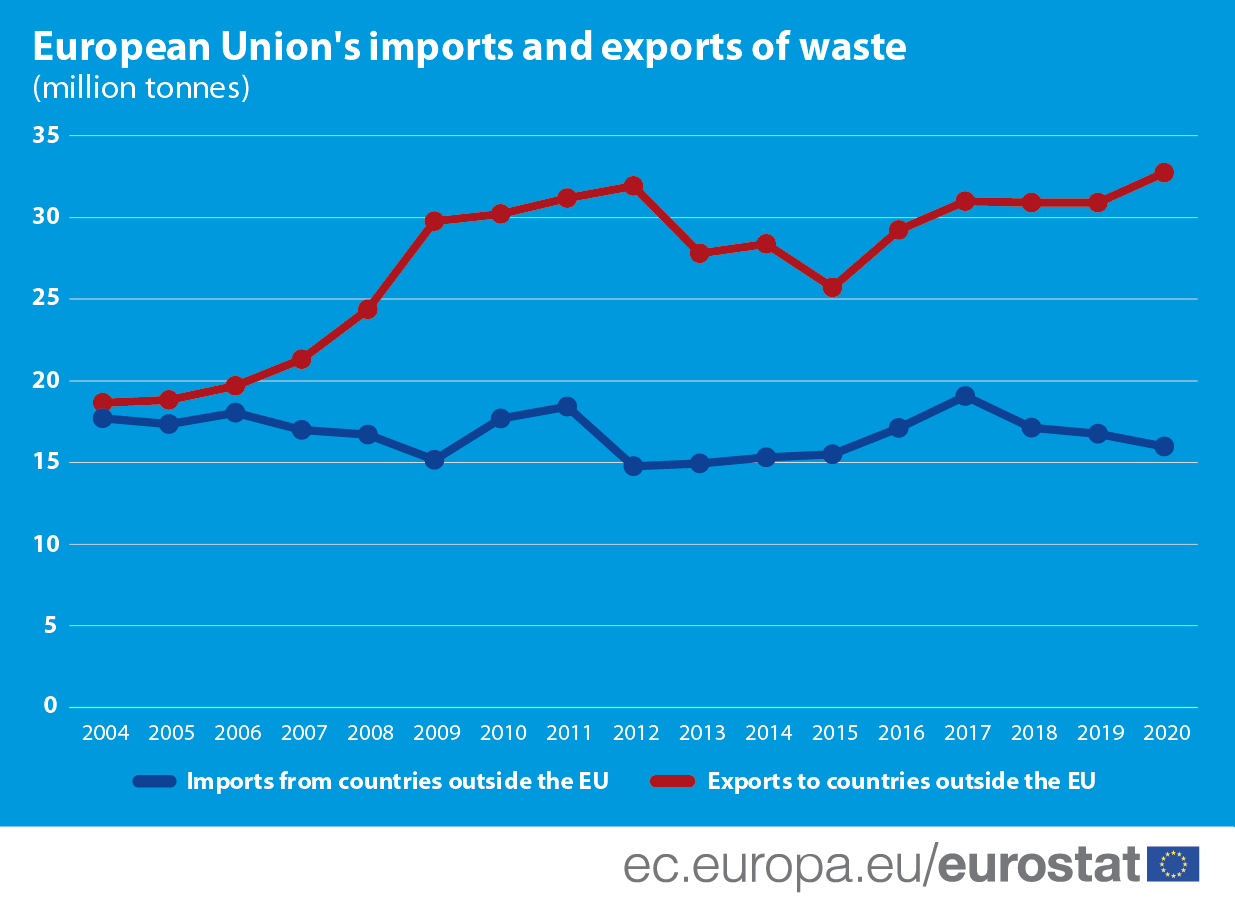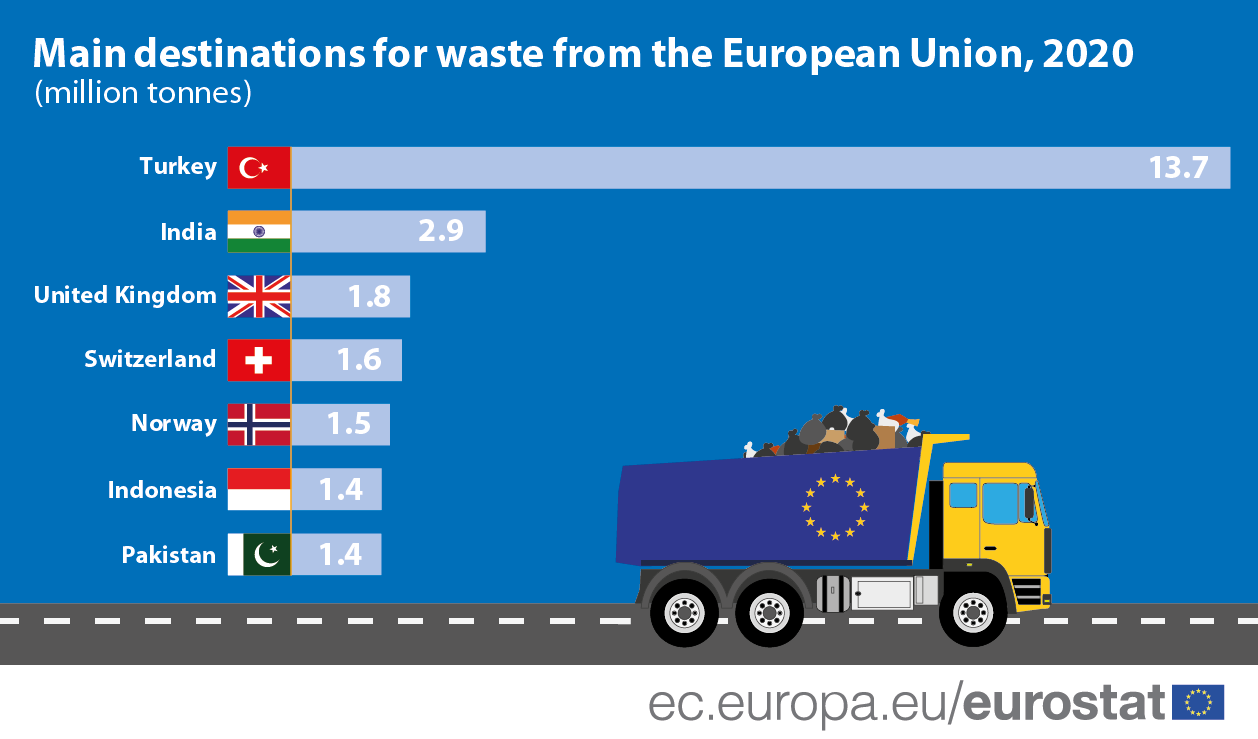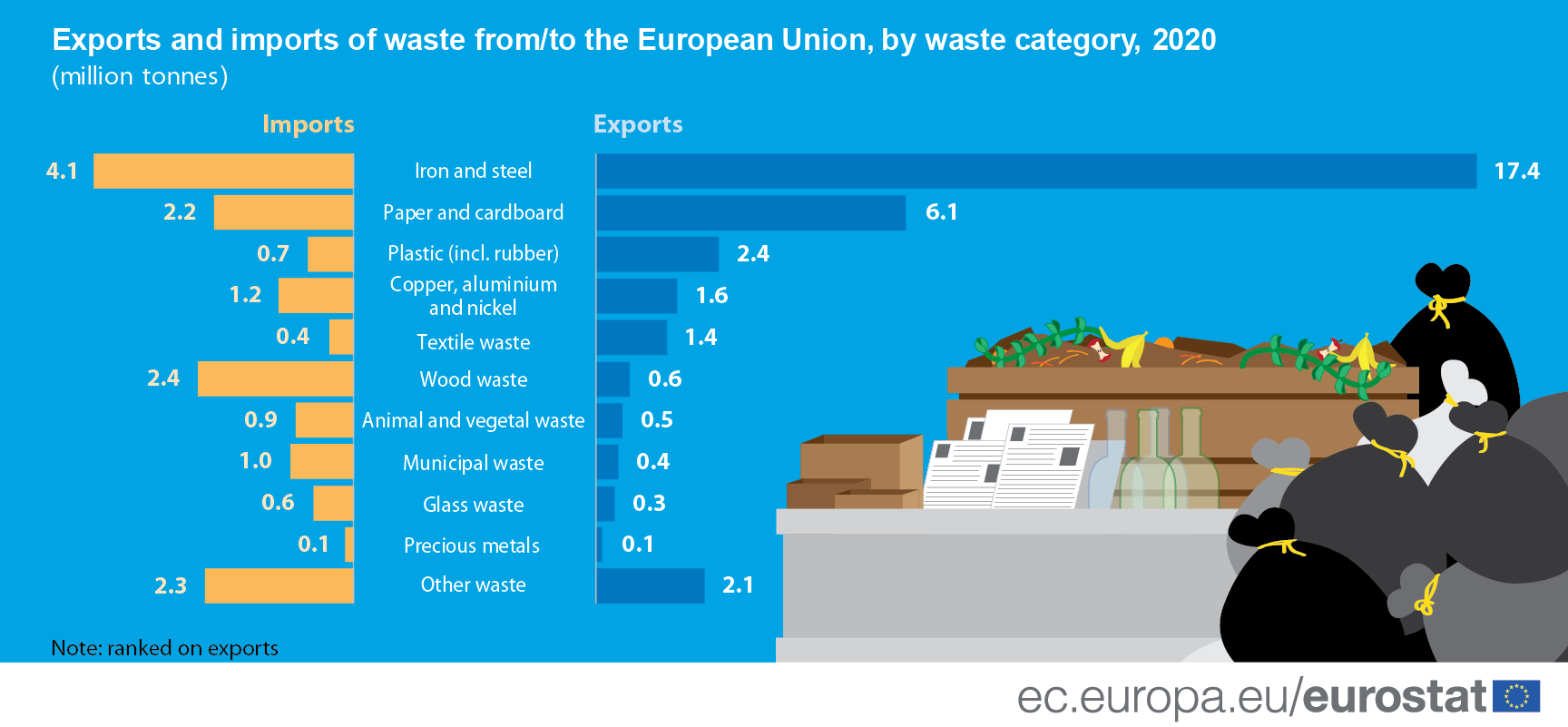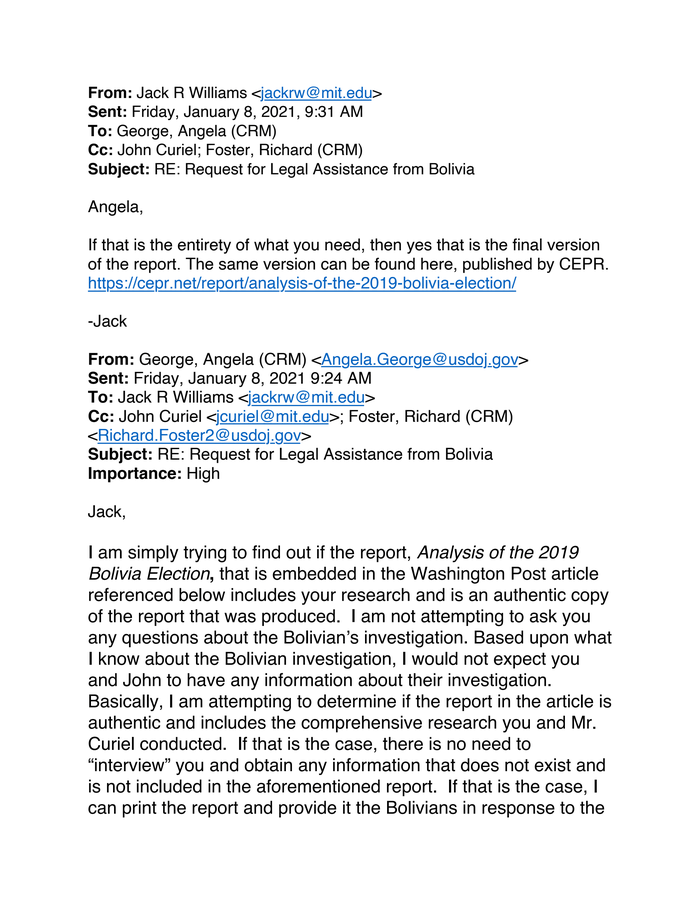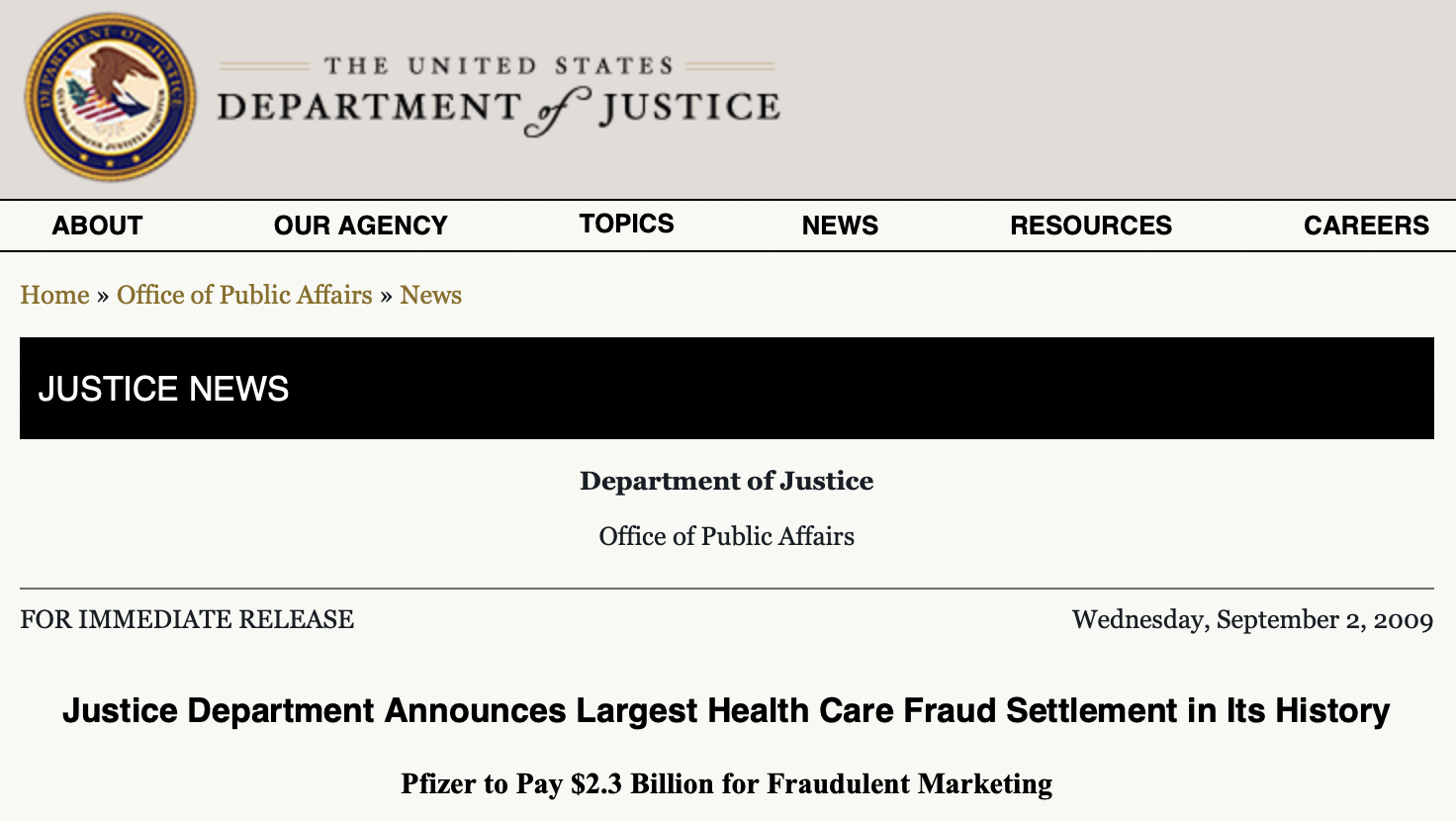This carefully researched article was first published on July 22, 2015
***
On March 1st 1954 the United States tested its first deliverable hydrogen bomb at Bikini Atoll in the Marshall Islands. The weapon yielded a force three times as large as its designers had planned or anticipated.1 The radioactive fallout cloud that resulted from the weapon would kill a fisherman located 100 km away, cause illness in hundreds and perhaps thousands of people across hundreds of miles, and contaminate entire atolls with high levels of radiation displacing residents most of whom have never been able to return to their homes. Slowly it would become evident that, while this weapon had been tested in the Marshall Islands, its detonation was a global event.
People around the world were shocked by the devastation wrought by the American nuclear attacks on Hiroshima and Nagasaki near the end of World War Two. Single planes had delivered single bombs that destroyed whole cities and killed tens of thousands of people in less than a second. These attacks and the spectre of future nuclear attacks cast a dark shadow on the future of humankind. Less than ten years later both the United States and the Soviet Union had developed weapons that made these original nuclear weapons seem small. Thermonuclear weapons, or H-bombs as they were called, were thousands of times more powerful with the potential to kill tens of millions of people with single detonations, many of whom would be far beyond the blast and heat reach of the weapon. Additionally, the radiation produced by these thermonuclear weapons spread around the globe, both in the water of the oceans and in the atmosphere, contaminating fish, birds, animals and plants far from nuclear test sites. As many of these radionuclides remain dangerous for hundreds of thousands of years, the dangers inherent in thermonuclear detonations would produce legacies still not well understood.
As radiation from Bravo the test spread around the Pacific Ocean, contaminating fish that would be caught thousands of miles away, human conceptions of warfare and of nature also began to mutate and change.
U.S. strategic nuclear planners quickly recognized the radiological fallout as a powerful tool of war, separate from the power of blast and heat that were fundamental to nuclear war fighting strategies. Over time both the United States and the former Soviet Union would integrate the capacity of this weapon to poison vast swaths of the Earth with lethal levels of radiation into their plans for attacking and “defeating” each other in a global thermonuclear war.
Conversely, observations on the movement of radiation through the environment after nuclear weapon tests would forge a new understanding of the interconnected nature of the Earth’s ecosystem. This understanding would reorient human beings to the planet on which they live, sparking and informing a global environmental movement that remains a potent social and political force today across national borders.2 Even as the traditional politics of nation states remains ongoing, many people have gained a visceral grasp of the interdependence of human societies separated by conflicting ideologies and national interests.
In the United States, whereas during both World War I and World War II, debate centered on the value of entering into a war that was happening “over there,” many people have come to understand that in World War III, there would be no “over there,” there would only be “here.” Whether scarred by blast and fire from a nuclear war, no place would be spared the inescapable lethality of the resulting radiation.3 Global thermonuclear war was just that, a war against the globe, against the Earth itself.
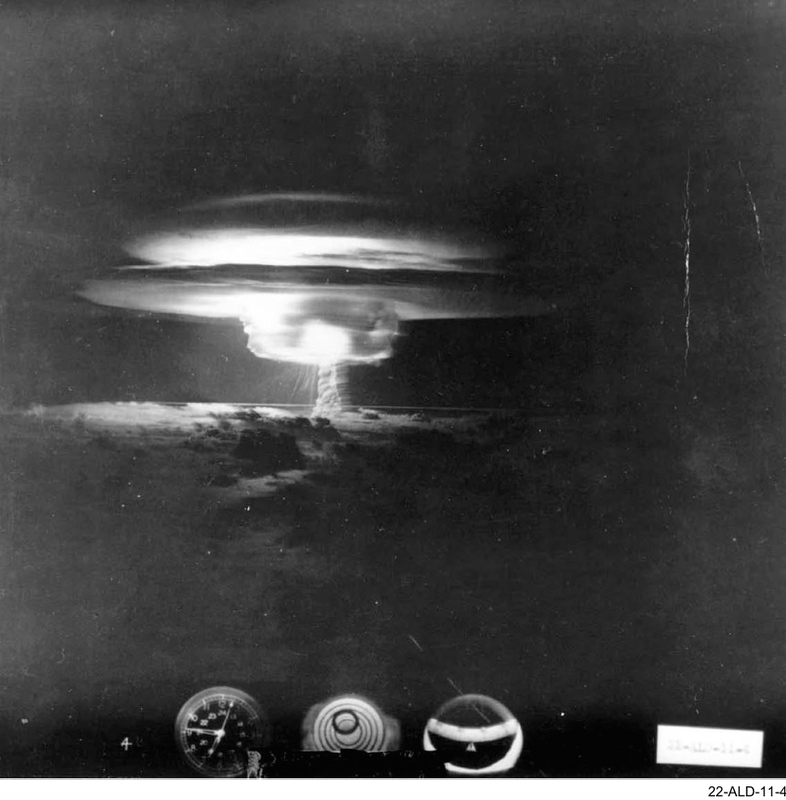
Mushroom cloud of the Bravo test photographed 62 seconds after detonation from 50 nautical miles North at 10,000 feet (Source: Kunkle and Ristvet)4 |
The Bravo Test and the Transformation of Conceptions of Radiological Fallout
After the nuclear attacks on Hiroshima and Nagasaki, the United States maintained that while the weapons had produced radiation, this was inconsequential since those close enough to be affected by radiation would have been killed by the blast or heat of the explosion. Speaking at a press conference in September 1945 as journalists prepared to visit the site of the Trinity test site in New Mexico, Director of the Manhattan Project General Leslie Groves told reporters that studies show, “that very few persons killed in Hiroshima died from gamma rays, and that nearly all of the casualties resulted from the blast, or from the instantaneous and intense heat.”5
In September of 1945 Wilfred Burchett of London’s Daily Express became the first journalist to reach Hiroshima.6Burchett wrote that countless survivors of the blast and heat were dying of “atomic plague,” or more directly—the effects of radiation, which would come to be called “atomic bomb disease” in Hiroshima and Nagasaki.7 The United States soon acknowledged some impact of radiation on the survivors and in 1947 set up the Atomic Bomb Casualty Commission (ABCC) to study (but not to treat) the long-term health effects of radiation exposure on the population of hibakusha (atomic bomb survivors) in Hiroshima and Nagasaki. However, the U.S. censored all discussion of radiation and of the radiological impacts of its nuclear attacks inside Japan during the period of occupation, and monopolized the research results of the ABCC for decades denying outside scientific and medical researchers access to the lab’s findings.8
The U.S. government continued to downplay the threat of radiation from nuclear weapons. Even as the Soviet Union acquired nuclear weapons in 1949 and the U.S. began to feel vulnerable to a Soviet attack, American discourse around such a threat emphasized the blast and heat aspects of Soviet weapons and downplayed the significance of radiation. This was done to forestall public anxiety, and possible opposition, to its own nuclear weapon testing inside the continental United States in Nevada, which began in 1951 in response to the Soviet acquisition of nuclear weapons. At the Nevada Test Site, troops that took part in “atomic maneuvers” during nuclear tests were presented with indoctrination before tests that also downplayed the dangers of radiation. “Truthfully, it (radiation) is the least important of the three effects as far as the soldier on the ground is concerned,” advised an Armed Forces Special Weapons Project officer to participants in “Desert Rock VI, “Since buildings are destroyed by blast out to a couple of miles and burning occurs maybe three miles away, you can see that the radius of fatal radiation is much less.”9

Troop indoctrination at Desert Rock VI during Operation Teapot in the Nevada Test Site (source: screen capture from “The Atom Soldier”)10 |
The United States had used the northern atolls of the Marshall Islands as a nuclear weapon testing site since seizing the entire island chain from the Japanese and was formally granted status as the protectorate of the Marshall Islands by the United Nations after World War Two.11 While granted “protectorate” status, the U.S. treated the Marshall Islands as a colony to be used for military experimentation. Many who lived there were directly harmed by U.S. nuclear tests, including being displaced from their homes, having their homes and food sources irrevocably contaminated by radiation, and experiencing sickness and death from being directly irradiated by nuclear weapon fallout. Rose Gottemoeller, U.S. Acting Under Secretary for Arms Control and International Security, speaking as an official U.S government representative at the 60th anniversary of the Bravo test in the now independent Republic of the Marshall Islands, thanked the people of the islands for the sacrifice imposed by the U.S.:
The American people remember what took place here and honor the historical and current contributions that the Marshallese people make to help promote peace and stability around the world. For many of you, that means remembering lost family members and loved ones – they are in our thoughts and prayers, as well. Today we honor their memory and I know that words can only go so far in healing wounds, but this nation has played an outsized role in the fight for a safer world and for that the United States, and the world, thanks you.12
The “protectorate” status of the Marshall Islands provided no protection for its citizens from the blast and radioactivity that left Bikini (and other islands?) uninhabitable for centuries to come?
The U.S. referred to its test site in the northwest corner of the Marshalls as its “Pacific Proving Ground.” As it developed its nuclear weaponry from fission weapons in the 1940s to thermonuclear fusion weapons in the 1950s, the Atomic Energy Commission (AEC) of the United States had an unstated policy of not testing thermonuclear weapons at its Nevada Test Site, since it was well aware of the radiological hazard it was publicly downplaying.13 The U.S. has never tested thermonuclear weapons inside the United States. Only 14% of the nuclear weapons tested by the United States were detonated at the Pacific Proving Ground, however this 14% accounted for 80% of the total yield of all nuclear weapons tested.14
The United State’s efforts at containing public awareness of the dangers of radiation from nuclear weapons were generally successful prior to the manufacture and testing of thermonuclear weapons in the early 1950s. The first thermonuclear test conducted by the United States, the Mike test of the Ivy series at Eniwetok Atoll in the Marshall Islands in 1952, did not raise public concern as the U.S. was able to keep the thermonuclear nature of the Mike test secret.15 However, after the Bravo test in the Castle series in 1954, the scale of the radiological disaster that the test wrought proved to be both a humanitarian and a public relations disaster for the United States. The Bravo weapon yielded a cloud of lethal levels of radioactive fallout that, according to AEC calculations in 1955, had the weapon been detonated in Washington DC, would have left downwind Baltimore, Philadelphia and New York City uninhabitable.16

“Fallout pattern from Castle Bravo detonation superimposed on the Eastern United States,” (source: AEC meeting 24 May 1954, reprinted in, Hewlitt and Holl)17 |
This fallout cloud spread downwind from Bikini Atoll and contaminated thousands of square miles. Within this area were located dozens of atolls and islands, and countless fishing vessels. The Japanese Ministry of Health and Welfare would later estimate the number of ships at 856, and the number of exposed crewmembers at more than 20,000.18 One vessel in particular, the Daigo Fukuryu Maru (known in English as the Lucky Dragon) is of historical importance because the radiological contamination of its crew ended the United States’ ability to control awareness of the dangers of radioactive fallout.19 The Daigo Fukuryu Maru was at anchor over 100km away from the detonation point of the Bravo device on Bikini Atoll. Approximately three hours after the detonation, ash began to fall, depositing a thick layer on the boat and its personnel. Unbeknownst to the crew this was highly radioactive fallout ash from the Bravo test. Many experienced burns on their skin and all experienced radiation poisoning. When the boat returned to the port of Yaizu two weeks later, all crewmembers were hospitalized and treated for radiation poisoning. Until the Daigo Fukuryu Maru arrived back in Japan the U.S. had been able to contain awareness of the devastating scale and lethality of the fallout from the Bravo test. However, because it berthed at a port outside the U.S., the radiation symptoms were immediately diagnosed and the Japanese press quickly reported on the condition of the crew. Reports in the international press followed.20 With these stories the United States lost control over the narrative of radioactive fallout.
As I have written elsewhere, it was this incident that put the word “fallout” into common use in the world media and culture.21 Prior to the Bravo incident, fallout, when written about in the Western press, was referred to as “residual radiation,” a term taken from military and scientific discourse. This was to distinguish the fallout from “prompt radiation,” and was almost always followed by the official disclaimer that only “prompt radiation” was a concern in a nuclear attack. In publications printed for both American military personnel and the American public “residual radiation” was said to be easy to remove with a broom, or with soap and water.22 The ash that fell on the crew of the Daigo Fukuryu Maru was residual radiation: it was fallout. While the entire crew suffered from radiation poisoning, radioman Kuboyama Aikichi died a little more than six months later from exposure to radiation. With the attention of the world press on the crew, it became clear to all that you could be 100 km away from the detonation of a thermonuclear weapon and yet be killed by the fallout. There was no way for the AEC to spin this fact—they had lost control of the narrative. Public interest in, and awareness of radioactive fallout would only grow more intense throughout the 1950s.23
Poisoning the World: Nuclear War Fighting Doctrine and Radiation
U.S. nuclear weapon designers and the American military had been aware of radioactive fallout from the beginning of nuclear weapon design and testing. Radiological monitoring crews were dispersed in the area around the Trinity test, the first nuclear weapon detonation, in New Mexico on July 16, 1945. These crews had detected radiation downwind from the explosion but had determined the levels were not significant enough to require action.24 American scientific and technical personnel engaged in bomb assessment in Hiroshima and Nagasaki had also been aware of the presence of residual radiation from the nuclear attacks on those two towns, in Hiroshima resulting in the infamous black rain.
U.S. nuclear testing in the Marshall Islands did not begin in 1954. Immediately after the end of the war, the United States began to make arrangements to continue testing nuclear weapons.25 The U.S. evacuated the residents of Bikini Atoll in 1946 and conducted two nuclear weapon tests there during Operation Crossroads; these were the first postwar nuclear weapons tests. The second of the Crossroads tests, the Baker test, was the first detonation of a nuclear weapon underwater.26 The aim was to determine the effectiveness of nuclear weapons to destroy naval ships in an enemy’s harbor. While nuclear weapons detonated in the atmosphere tended to disperse the residual radiation downwind from the cloud of the explosion, underwater tests concentrated the residual radiation in the water immediately around the site of detonation. This resulted in unexpectedly high levels of radiation in the lagoon of Bikini Atoll. Since many naval vessels were used to conduct the test and to hold the 40,000 military personnel onsite for the tests, many of the ships became highly radioactive as a result of using lagoon water to wash the boats. As the level of radiation rose, troops had to be evacuated from the ships, scuttling a planned third Crossroad test.27
The insidious nature of the radiological hazard was deeply impressive to analysts of the test series. In the final report on the test series written in 1947, along with its brutal assessment of the physiological effects of the bomb, military planners took special note of the unique psychological capacity of the radiological effects of nuclear weapons to degrade the society of the targeted nation:
3. Test Baker gave evidence that the detonation of a bomb in a body of water contiguous to a city would vastly expand its radiation effects by the creation of a base surge whose mist, contaminated with fission products, and dispersed by wind over great areas, would have not only an immediately lethal effect, but would establish a long term hazard through the contamination of structures by the deposition of radiological particles.
4. We can form no adequate mental picture of the multiple disasters which would befall a modern city, blasted by one or more atomic bombs far more powerful than those of the first generation and enveloped with radioactive mists. Of the survivors in contaminated areas, some would be doomed to die of radiation sickness in hours, some in days, and others in years. But, these areas, irregular in size and shape, as wind and topography might form them, would have no visible boundaries. No survivor could be certain he was not among the doomed and so, added to every terror of the moment, thousands would be stricken with a fear of death and the uncertainty of the time of its arrival.28
Though they would publicly downplay the lethality of radiation as a weapon, this top secret assessment demonstrates that American military planners were keenly aware at a very early point of both the devastating immediate and long-term physical effects, as well as the psychological impact of the fallout resultant from nuclear detonations.29
As the Cold War developed, the United States came to rely primarily on its nuclear weaponry as a counterforce to perceived Soviet superiority in conventional arms and troop numbers.30 Both Presidents Truman and Eisenhower threatened to use nuclear weapons in the Korean War, and even deployed them in the region, but found them militarily useless in that conflict.31 There, and in Vietnam, however, the United States did not hesitate to build up the vast quantities of conventional forces and weapons that it was reluctant to stage in Europe.
The Soviet Union’s detonation of its first nuclear weapon in Kazakhstan in late 1949 had a galvanizing effect on American nuclear planning.32 The most consequential of these effects was to concretize the Truman administration’s support for development and production of thermonuclear weapons. Fundamental to this drive was a dramatic increase in the production of plutonium. Asserting in 1949 “ that we will never obtain international control,” Truman insisted that “we must be the strongest at atomic weapons.”33 Again in 1950, Truman moved to increase plutonium production through the construction of new nuclear power plants at the Hanford Reservation in Washington State, resulting in a total of nine nuclear power plants located at Hanford by 1963 and doubling American plutonium production.34 Over time, the increase in American plutonium output fueled a massive increase in the numbers of American nuclear weapons, and subsequently of designated nuclear targets.
American nuclear weapon targeting had three different foci, BRAVO, DELTA and ROMEO targeting. BRAVO targeting aimed at neutralizing the nuclear capacity of the Soviet Union; DELTA targeting aimed at destroying the infrastructure of Soviet society and its ability to support a military effort; and ROMEO targeting aimed at repelling a Soviet military incursion into Western Europe. DELTA targets were designed to degrade the enemy’s capacity to engage in manufacturing industrial output, and all forms of social and industrial support for military activity.35 Of the three targeting protocols DELTA made the greatest use of the effects of fire and radiation. While ROMEO protocols also made use of fire and radiation, there was a limitation to its usefulness because of the presence of friendly troops on the same battlefields and the need to hold ROMEO-targeted territories in the course of warfare. There was no perceived downside to the damage caused by fire and long-term damage from radiological contamination to many DELTA targets.
The United States never utilized radioactive fallout as a targeting mechanism in battle because it is difficult to be precise about the use and spread of radioactive fallout. In targeting strategy radioactive fallout was considered a “bonus effect” as were the fires that would be created by the detonation’s heat.36 However, it was well known to nuclear strategists that the bonus effect of radiation would produce tremendous lethality.
Recognition of the capacity of radioactive fallout to sicken or kill significant portions of the population in downwind areas was a fundamental aspect of DELTA targeting. During nuclear weapon tests conducted in 1948 the United States experimented with detonating weapons closer to the ground then the detonations of the Hiroshima and Nagasaki weapons, finding a dramatic increase in the levels of lethal radioactive fallout.37 We can see how such an understanding ledtargeteers (the military term for intelligence officers tasked with designating targets before an attack) to envision an essential role for radioactive fallout even before the capacities of thermonuclear weapons were integrated into targeting strategies in a report written after a briefing of senior U.S. military personnel by Strategic Air Command (SAC) planners in March 1954 just as the Bravo event in the Marshall Islands was unfolding. Captain William B. Moore, Executive Assistant to the Director of the Atomic Energy Division of the U.S. Navy, wrote to his superiors that in the “optimum plan” of the Strategic Air Command for attacking the Soviet Union, “It was estimated that SAC could lay down an attack under these conditions of 600-750 bombs by approaching Russia from many directions so as to hit their early warning screen simultaneously. It would require about two hours from this moment until bombs had been dropped using a bomb-as-you-go system in which both BRAVO and DELTA targets would be hit as they reached them.” Moore concluded, “The final impression was that virtually all of Russia would be nothing but a smoking, radiating ruin at the end of two hours.”38
When General Curtis LeMay took the position of Commander of the newly formed Strategic Air Command in 1948, his initial goal was to build a force capable of delivering 80% of the U.S. nuclear stockpile simultaneously in an attack on the Soviet Union within two hours.39 By the end of the 1950s, as the U.S. nuclear stockpile increased and the planes constituting SAC’s attack force were upgraded and increased, the SAC plans intensified with a focus on targeting aimed at producing a 97% assurance of target destruction at the first 200 DGZs (designated ground zeros), and 93% for the next 400 DGZs. SAC planning assumed that to achieve a comparable level of destruction to Soviet targets that it had achieved with the 13-16kt nuclear weapon in Hiroshima, it would assign a 300-500kt weapon. Admiral Harry Felt, in charge of the U.S. Navy’s Pacific Command at the time, commented that if SAC’s operational plan was implemented as designed he might have to be “more concerned about residual radiation damage resulting from our own weapons than from those of the enemy.”40
There was awareness and pushback within the military to the targeting and nuclear war fighting strategies promoted by SAC. Much of this pushback was the product of inter-service rivalries with the Navy and Army resentful of the large budget and strategic dominance of the Strategic Air Command. By the late 1950s increasing Soviet nuclear capabilities made it clear that nuclear bombers on the ground were easy targets for a Soviet first strike attack. The Army and Navy were at the very beginning of the push that would disseminate American nuclear forces among the three services rather than being the sole possession of the Air Force. In 1957 the Army Chief of Staff and Navy Chief of Operations, “had their staffs prepare a joint analysis of high yield weapon requirements, focusing on the radiation and fallout that would result from implementing the SAC war plan.”41 Their findings were presented to President Eisenhower through a report titled Project BUDAPEST. The report asserted that, “far more weapons were being assigned to targets than were needed to achieve the damage required by the JSCP (Joint Strategic Capabilities Plan), and that the resulting radiation and fallout would be dangerously and unnecessarily high.”42
Such critiques did not result in significant reductions in weapons included in strategic war planning or nuclear targeting selection. Just days after newly elected President John Kennedy took office in early 1961 a SAC bomber blew up in mid-air over North Carolina while carrying two Mark 39 thermonuclear weapons each with a yield of approximately 4 MT (megatons). In the accident one weapon fell from the plane and crashed to the ground, with five of its six safety mechanism’s failing.43 Defense Secretary Robert McNamara, shocked at how close the U.S. came to a thermonuclear detonation on its own territory, undertook a review of weapons protocols and war fighting plans. He then learned of the numerous accidents involving nuclear weapons (“broken arrows”) and the lack of centralized control of the arsenal in the office of the President. McNamara visited SAC headquarters in Omaha, Nebraska to receive a briefing from SAC Commander Thomas Powers on the newly created SIOP (Single Integrated Operational Plan) that coordinated nuclear attacks by the different service branches into one coherent attack plan.44 McNamara was shown the designed impacts of the successive waves of nuclear attack planned against the Soviet Union. The first wave focused on the BRAVO targets of Soviet strategic assets, while the second wave was focused on DELTA targets and aimed at Soviet urban centers. When shown the estimated fallout anticipated from the two attack waves McNamara was “visibly shocked” to see that virtually the entire Soviet landmass and beyond would be covered with lethal levels of radioactive fallout resulting in estimated casualties among Soviet, Chinese and Eastern European populations of 350 million people.45
A glimpse into the military strategy that would result in a planet blanketed with radioactive fallout entered into public discourse in the United States in 1956 when the testimony of General James Garwin, the Army’s chief of research and development before a closed session of the Air Force Subcommittee of the Senate Committee on Armed Services in July of that year was made public. General Garwin commented to Committee members that should the Soviet Union attack the United States with nuclear weapons, “American retaliation against Russia would spread death from radiation across Asia to Japan and the Philippines. Or if the winds blew the other way, an attack on eastern Russia could eventually kill hundreds of millions of Europeans including…possibly half the population of the British Isles.”46
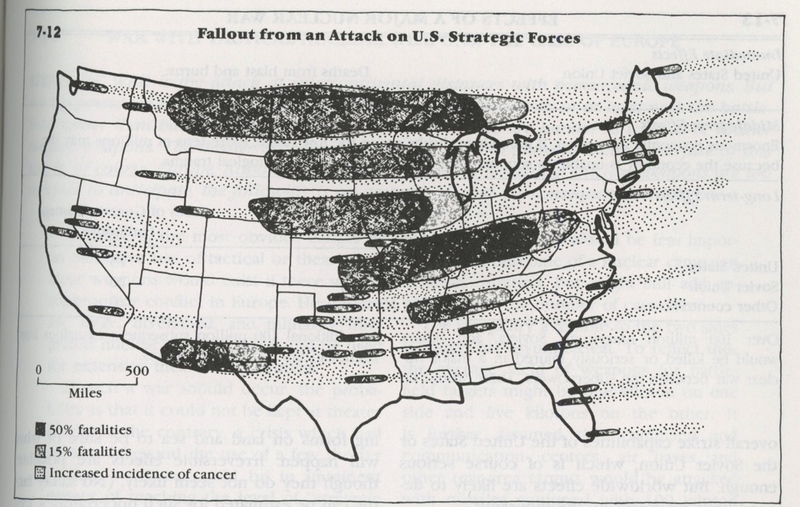
Map showing anticipated fallout pattern from a limited Soviet attack on the US, targeting each nuclear weapon launching facility with a one 1MT weapon (Source: Morrison and Walker (1983), 153)47 |
The tactical planning for the deaths of hundreds of millions of people in the target nation and untold tens of millions more downwind was achieved in less than two decades after the advent of nuclear weapons and only a couple of years after the achievement of thermonuclear weapons. In the subsequent two decades delivery systems would be further enhanced and nuclear weapons would be placed on the tips of intercontinental ballistic missiles—giving them the ability to strike targets on the other side of the world in less than an hour; and then MIRV’d (multiple independently targeted re-entry vehicles)—giving each missile the potential to carry up to fourteen of these weapons to separate targets.48 In 1945, after the nuclear attacks on Hiroshima and Nagasaki, many people throughout the world began to worry that nuclear weapons could destroy all life on Earth. By the end of the 1950s this abstract fear was being translated into an essential component of nuclear war planning.
Ecosystem Awareness and the Earth as Mortal
I have written elsewhere on how the nuclear attacks on Hiroshima and Nagasaki helped human beings conceptualize the nature of the earth in a fundamentally new manner.49 Visions of World War III, a repetition of World War II and World War I fought with nuclear weapons, gave rise to the notion of the entire earth as the target, and the victim, of those weapons and the casualty of that war. For the first time in the history of the world it was possible to imagine that hundreds of millions of people on all sides of any conflict would be casualties, and that there would be no winner left to savor the victory.
The idea of the earth as victim implies a new conception of the earth—as something that can be killed—and therefore as something that is alive. As people around the world became more aware of the dangers of radiological contamination, and the extent to which this contamination was already present from the massive nuclear testing programs undertaken by all nuclear weapons states, an awareness of the damage to the ecosystem from the spread of radiation separate from the possibility of nuclear war began to emerge. This understanding began as cognitive fallout from the Bravo test.
When the Daigo Fukuryu Maru pulled into port in Yaizu, the public learned that radioactive fallout could sicken and kill people located over 100 km from a detonation, making clear the far ranging and lethal aspects of fallout from a single nuclear weapon. Slowly, additional impacts from Bravo’s radiation came into view. By the time that it was clear that the hospitalized crew was suffering from radiation sickness and that the fish they caught had been irradiated, their catch of tuna had already made it to market.
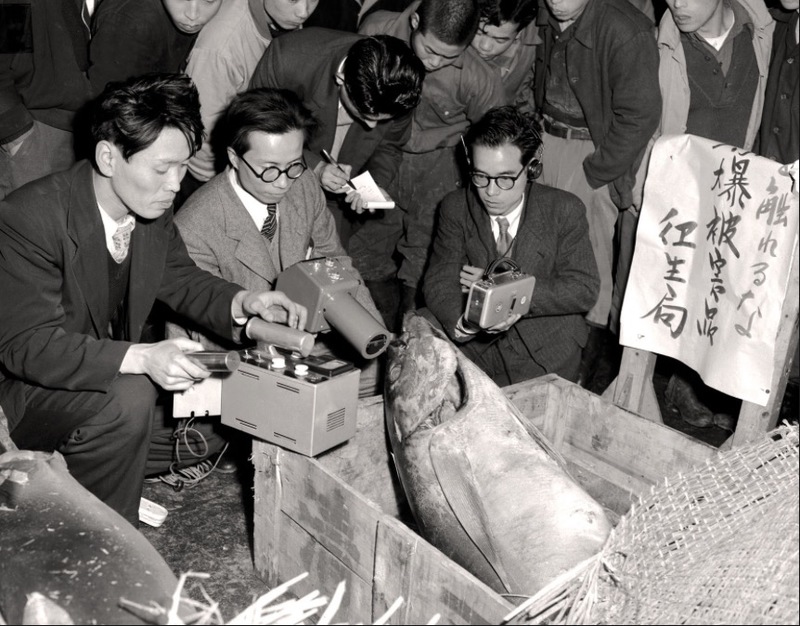
Officials of the Tokyo Metropolitan Government measure the levels of radiation of tuna offered for sale at Tsukiji fish market in Tokyo in 1954 (source: KYODO) |
Public safety monitors endeavored to find the, presumably radioactive, tuna. While monitoring the tuna supply at fresh fish markets, such as Tsukiji in Tokyo, they found that a significant amount of fish were testing positive for radiation. All across Japan tuna was dumped into pits and buried. Around the Pacific Rim radioactive fish were found in numerous markets. In July 1954 a Japanese research team was sent to Bikini Atoll since the Marshall Islands was the source of a large percentage of tuna consumed in Japan, and found the tuna there “seriously affected.” Reports continued to describe radioactive tuna far from the North Pacific location of the Marshall Islands. In October 1954, in a catch that came to Yokohama, all caught approximately 1,000 miles to the northeast of the Marshall Islands, one in ten tuna was found to be highly radioactive. In November two tons of tuna caught off the coast of Australia were found to be highly radioactive when brought to market in Tokyo, one of five ports where Geiger counters were in place to measure the catches.50 The fact that contaminated fish were found all around the Pacific Rim, and that people had been made sick or were killed by fallout such as on the Daigo Fukuryu Maru, made it clear that once these radionuclides had entered the ecosystem they were not fixed at the site of contamination, but instead moved far and wide through air and water.
Concurrent with the reports of the illness of the crew of the Daigo Fukuryu Maru and of the contamination of hundreds of Marshallese, news began to emerge from inside the United States about downwind radioactive fallout from nuclear weapon testing in Nevada. One morning in 1954, a radiochemistry class at Rensselaer Polytechnic Institute in Troy, New York noticed that their Geiger counters were all registering unusually high levels. The teacher and students found that when they took the Geiger counters outside the levels spiked dramatically higher. AEC scientists determined that a fallout cloud from a nuclear weapon test in Nevada two days earlier had deposited the radiation they were reading.52 In 1955 Dr. Ray Lanier, head of the University of Colorado Medical Center’s Radiology Department, and Dr. Theodore Puck, head of the Center’s Biophysics Department, released a public statement to the Associated Press (AP) describing how the radiation levels in Colorado spiked only hours after a nuclear test in Nevada. “The trouble with airborne radioactive dust is that we breathe it into the lungs where it may lodge in direct contact with living tissues,” Puck told a reporter from the AP.53

Japanese government map of locations of radioactive fish catches(source: drawing by Y. Nishiwaki reprinted in, Sevitt)51 |
Against the discourse put forward by the U.S. government—that there was no cause for concern about increasing levels of radioactivity throughout the country from nuclear weapon testing—scientists and activists began to push back with data collected from outside of AEC laboratories. The most important of these studies was the famed “Baby Tooth Study” conducted by pathologist Walter Bauer of the Washington University School of Medicine in St. Louis, physiologist and activist Barry Commoner, and Dr. Alfred Schwartz, a St. Louis pediatrician. This study collected baby teeth sent voluntarily to the Committee on Nuclear Information and analyzed them at Washington University for strontium-90 content. The Baby Teeth Study found that the levels of strontium-90 in the teeth of children being born in the late fifties and early sixties contained on average 14 times more strontium-90 than those of children born ten years earlier. Antinuclear activists seized on this data as global fears were rising about the dangers of radioactive fallout from nuclear weapon tests, which were being conducted in the United States and many other localities including the Soviet Union and the Pacific Islands at the rate of dozens per year throughout most of the fifties and early sixties.54
The RAND Corporation conducted a similar, but secret, study years earlier under contract to the United States Atomic Energy Commission, published under the name Project Sunshine, analyzing teeth, bones and the ashes of cremated bodies collected from human subjects and cadavers around the world.55 When the program began in the mid-fifties, top secret documents reveal AEC commissioner Willard Libby proclaiming that, “If anybody knows how to do a good job of body snatching, they will really be serving his country.”56 In Australia the bones and teeth of 22,000 people were gathered, without their permission, to check the extent of the reach of fallout into the Southern Hemisphere. Their findings were in line with the later Baby Teeth Study findings that there had been an increase in traceable radionuclides in the bodies of everyone living being after the advent of nuclear weapons .57
In September 1961, in the midst of the Berlin Crisis, the Soviet Union abandoned the nuclear testing moratorium it had agreed to with the U.S. and U.K. which had halted nuclear tests by the three countries since November 1958. Testing began again with a feverish intensity with the U.S. itself testing more than 96 nuclear weapons in 1962.58 Deeply troubled by the renewal of nuclear weapon testing, and especially its intensity, the antinuclear group, The Committee for a Sane Nuclear Policy, or SANE (founded in 1957 and currently known as Peace Action) utilized the data contained in the Baby Teeth Study in a series of devastating advertisements. What made these ads so powerful was that, at a time when radiological fallout was being spread across the globe, there was no place on Earth where one could avoid it, and especially, where children could be protected from the threat.59 SANE published an ad featuring a photo and statement from Dr. Benjamin Spock, a beloved public figure and author of a bestselling book on raising children.60 Spock had unquestioned authority in the U.S. on issues of children’s health at the time, and his participation in the advertisement led to it being reprinted in over 700 other publications after its initial placement in the New York Times. SANE also published ads that showed a milk bottle emblazoned with the symbol for poison (reflecting the primary path of radioactive iodine-131 into the body via dairy products), and also an ad that directly reflected the findings of the St. Louis Baby Tooth Study, which proclaimed, “Your Children’s Teeth Contain Strontium-90.”61
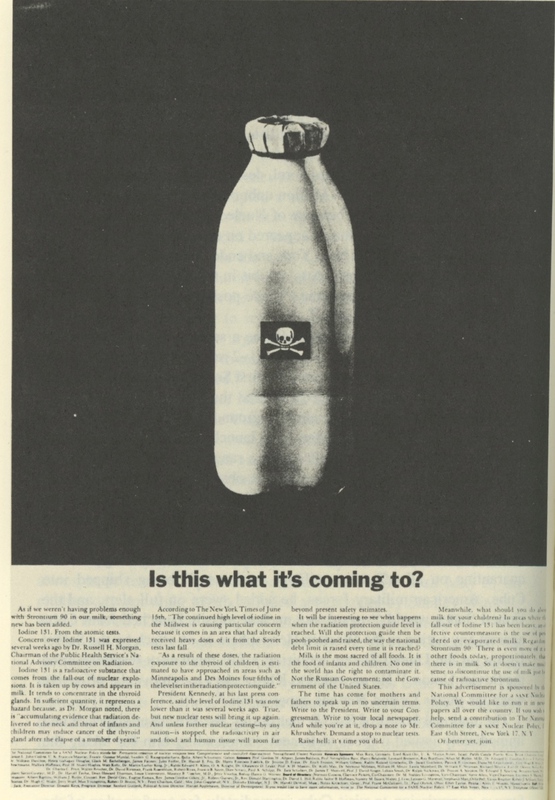
SANE advertisement about iodine-131 in milk published in July 1962(source: Katz)62 |
At roughly the same time, Rachel Carson published her landmark book Silent Spring. Carson argued that the widespread and indiscriminate use of pesticides, such as DDT, was killing birds and that human civilization ran the risk of being responsible for the extinction of all birds. Carson suggested that this would create silent springs in the seasons of the future. Carson’s work further reinforced the emerging public sense that the new technological threats to human society were having a global impact.63
Ecological study, awareness, and activism would grow throughout the 1960s and 1970s. The idea of the Earth as a single ecosystem would coalesce in the 1980s around a concept articulated by the British scientist James Lovelock. Lovelock’s book, Gaia: A New Look at Life on Earth would provide a scientific frame for the emerging popular sense of the Earth as a living being.64 Lovelock worked for NASA during the mid-sixties and was part of a team that worked on establishing a definition for “life” to create a framework to assess any possible life form discovered on the Moon, on Mars, or in later space exploration. In the process of designing criteria for such a determination, Lovelock turned his gaze back on the Earth and concluded that, in essential ways, the Earth functioned as a single, self-regulating organism. At the suggestion of his friend and neighbor, the Nobel Prize winning novelist William Golding, Lovelock named this organism Gaia. This simple framing mechanism established a means of describing and understanding the newly emergent notion of the Earth as having a single ecosystem that is affected holistically by the entry of toxic chemicals and radionuclides. The images of the Whole Earth as seen from space, perhaps the most resonant visual icon of the late Cold War, now took a name from Greek mythology.65
Conclusion
The atmospheric nuclear testing of hydrogen bombs made visible, as nothing had before, the interconnected nature of the ecosystem of the Earth. Like radiation medicine administered to a patient to make the internal system visible to doctors, the movement of radionuclides through the ecosystem revealed a systemic interconnectedness that had been previously invisible. Radioactive fallout was raised high into the atmosphere by the mushroom clouds of thermonuclear weapons and the fallout from these tests was often deposited far from the test site—often on the other side of the world. Nuclear testing in the Pacific led to contaminated fish being located across the ocean and throughout the Pacific Rim. By the end of the 1950s it was clear to anyone who paid attention that there was no place that would be unaffected if the United States and the Soviet Union were to engage in a global thermonuclear war. The battlefield would be the Earth itself, and the people of every nation, whether they were at war or not, would be its casualties. This understanding generated some positive outcomes. A great deal of the environmental movement as it emerged in the 1960s and 1970s built upon the worldview constructed through the awareness of the global nature of the threat of radioactive fallout. Current discourse around the topic of climate change is framed on this construct. Bravo was where this awareness emerged into human consciousness.66
This is an expanded version of an article first published in the Hiroshima Peace Research Journal Vol. 2 (2015): 77-96.
Robert Jacobs is an associate professor at the Hiroshima Peace Institute of Hiroshima City University and an Asia-Pacific Journal contributing editor. He is the author of The Dragon’s Tail: Americans Face the Atomic Age (2010), the editor of Filling the Hole in the Nuclear Future: Art and Popular Culture Respond to the Bomb (2010), and co-editor of Images of Rupture in Civilization Between East and West: The Iconography of Auschwitz and Hiroshima in Eastern European Arts and Media (forthcoming 2015). His book, The Dragon’s Tail, is available in a Japanese language edition by Gaifu. He is the principal investigator of the Global Hibakusha Project.
The Asia-Pacific Journal, Vol. 13, Issue 29, No. 1, July 20, 2015.
Related articles
• Charles Pellagrino, Surviving the Last Train From Hiroshima: The Poignant Case of a Double Hibakusha
• Vera Mackie, Fukushima, Hiroshima, Nagasaki, Maralinga
• The Radiation That Makes People Invisible: A Global Hibakusha Perspective
• Sawada Shoji, Scientists and Research on the Effects of Radiation Exposure: From Hiroshima to Fukushima
• Masuda Yoshinobu, From “Black Rain” to “Fukushima”: The Urgency of Internal Exposure Studies
• Robert Jacobs, Radiation as Cultural Talisman: Nuclear Weapons Testing and American Popular Culture in the Early Cold War
• Robert Jacobs, Mick Broderick, Nuke York, New York: Nuclear Holocaust in the American Imagination from Hiroshima to 9/11
Notes
1 Richard G. Hewitt and Jack M. Holl, Atoms for Peace and War, 1953-1961: Eisenhower and the Atomic Energy Commission (Berkeley: University of California Press, 1989): 174.
2 Toshihiro Higuchi, “Atmospheric Nuclear Weapon Testing and the Debate on Risk Knowledge in Cold War America,” in, J. R. McNeill and Corinna R. Unger, eds.,Environmental Histories of the Cold War (Cambridge: Cambridge University Press, 2010): 301-322.
3 This theme can be seen in mainstream popular culture texts by the end of the 1950s. The book, and then Hollywood film On the Beach depicted isolated survivors of a global nuclear war in Melbourne, Australia awaiting the inevitable arrival of lethal levels of radiation. See, Nevil Shute, On the Beach (New York: William Morrow and Co., 1957); On the Beach, dir. and prod. Stanley Kramer *(United Artists, 1959).
4 Kunkle, Thomas and Byron Ristvet, Castle Bravo: Fifty Years of Legend and Lore: A Guide to Offsite Radiation Exposures. DTRIAC SR-12-001. Kirtland, NM: Defense Threat Reduction Agency, 2013: 54.
5 “Tell How Atom Bomb Turned Sand to Glass,” Chicago Daily Tribune (September 12, 1945): 1.
6 Richard Tanter, “Voice and Silence in the First Nuclear War: Wilfred Burchett and Hiroshima,” The Asia-Pacific Journal (August 11, 2005).
7 Wilfred Burchett, “The Atomic Plague: I Write this as a Warning to the World,” Daily Express (Sept. 5, 1945), p. 1. American journalist Amy Goodman has long advocated stripping the New York Times and its reporter William Laurence of their 1946 Pulitzer Prize for reporting about the bombings of Hiroshima and Nagasaki since Laurence was at the time on the Pentagon payroll and should be viewed as a military spokesperson rather than as a journalist. See Amy Goodman,“Hiroshima Cover-up: Stripping the War Department’s Timesman of his Pulitzer,” Democracy Now! (August 5, 2005) (accessed October 17, 2015). See also, Beverly Ann Deepe Keever, News Zero: The New York Times and the Bomb (Monroe, ME: Common Courage Press, 2004).
8 Susan Lindee, Suffering Made Real: American Science and the Survivors at Hiroshima (Chicago: University of Chicago Press, 1994): 17-55, 143-165.
9 United States, Army Pictorial Center, “The Atom Soldier,” The Big Picture (1955). This episode of the popular U.S. Army television show was filmed at the Nevada Test Site in January 1955 during Operation Teapot. The deceit in this statement is around what constitutes “fatal” in gamma levels. In Hiroshima and Nagasaki those within one mile experienced gamma ray doses that would lead to death within hours or days. Those beyond one mile still experienced levels that could be fatal, but in weeks or months.
10 Ibid.
11 Holly M. Barker, Bravo for the Marshallese: Regaining Control in a Post-Nuclear, Post-Colonial World (Belmont, CA: Wadsworth, 2004): 17-20.
12 Rose Gottemoeller, “Remarks at the Republic of Marshall Islands Nuclear Remembrance Day” (March 1, 2014) The anniversary of the Bravo test, March 1st, is a national holiday in the Republic of the Marshall Islands known as Nuclear Victims and Survivors Remembrance Day.
13 Barton C. Hacker, Elements of Controversy: The Atomic Energy Commission and Radiation Safety in Nuclear Weapons Testing, 1947-1974 (Berkeley: University of California Press, 1994): 180-184.
14 Malgosia Fitzmaurice, Contemporary Issues in International Environmental Law (Northampton, MA: Edward Elgar Publishing, 2009): 154.
15 Fission weapons are based on the principle of splitting an atom and releasing the energy in the nucleus. Fusion weapons mimic the physical process by which stars burn nuclear fuel and fuse two atoms together. Fission weapons are often referred to as A-bombs, while fusion weapons are referred to as H-bombs, or thermonuclear weapons. Thermonuclear weapons are thousands of times more powerful than fission bombs.
16 Atoms for Peace and War, 1953-196, 182.
17 Richard J. Hewlett and Jack M. Holl, Atoms for Peace and War, 1953-1961: Eisenhower and the Atomic Energy Commission (Berkeley: University of California Press, 1989): 181.f an article first published in the of an article first published in targets before an attack)ng Ground, however this 14% accou
18 Mark Schreiber, “Lucky Dragon’s Lethal Catch,” The Japan Times (March 18, 2012) (accessed July 16, 2015): Samuel Glasstone, ed., The Effects of Nuclear Weapons (Washington DC: US Government Printing Office, 1962): 460-64; “‘Missing’ Documents Reveal 1954 U.S. H-bomb Test Affected 556 More Ships,”Mainichi Shimbun (September 20, 2014) (accessed 28 October 2014).
19 Ralph Lapp, The Voyage of the Lucky Dragon (New York: Harper and Brothers, 1957).
20 Lapp, The Voyage of the Lucky Dragon; Oishi Matashichi, The Day the Sun Rose in the West: Bikini, The Lucky Dragon, and I (Honolulu: University of Hawaii Press, 2011).
21 Robert Jacobs, The Dragon’s Tail: Americans Face the Atomic Age (Amherst, MA: University of Massachusetts Press, 2010): 30.
22 See for example, “Warship Showers Off ‘Fallout,’” Popular Science (January 1957): 151.
23 Jacob Hamblin, “‘A Dispassionate and Objective Effort:’ Negotiating the First Study on the Biological Effects of Atomic Radiation,” Journal of the History of Biology 40 (2007): 147-177.
24 A. Constandina Titus, Bombs in the Backyard: Atomic Testing and American Politics (Reno: University of Nevada Press, 1986): 17-18.
25 Bravo for the Marshallese, 17-19.
26 Jonathan M. Weisgall, Operation Crossroads: The Atomic Tests at Bikini Atoll (Annapolis: Naval Institute Press, 1994).
27 David Bradley, No Place to Hide (Boston: Little, Brown and Company, 1948).
28 “The Evaluation of the Atomic Bomb as a Military Weapon,” June 30, 1947. JCS 1691/3, 57-89.
29 Jacobs, The Dragons Tail, 84-98.
30 Gregg Herken, Counsels of War (New York: Alfred A. Knopf, 1984): 103.
31 Robert Jacobs, “Military Nationalism and Nuclear Internationalism in Asia,” in Jeff Kingston, ed., Asian Nationalisms (New York: Routledge Press, 2015) forthcoming.
32 David Holloway, Stalin and the Bomb: The Soviet Union and Atomic Energy, 1939-1956 (New Haven: Yale University Press, 1994): 213-223.
33 Department of State, FRUS, 1949 Vol. I, National Security Affairs, Foreign Economic Policy (Washington, D.C.: U.S. Government Printing Office, 1976): 481-482.
34 Michele Stenehjem Gerber, On the Home Front: The Cold War Legacy of the Hanford Nuclear Site (Lincoln, NE: University of Nebraska Press, 1992), pp. 31-53.
35 David Rosenberg, “The Origins of Overkill: Nuclear Weapons and American Strategy, 1945-1960,” International Security 7:4 (Spring 1983): 16-17.
36 Lynn Eden has written a devastating critique of leaving out assessments of the fires created from nuclear detonations and war planning in, Lynn Eden, Whole World on Fire: Organizations, Knowledge, and Nuclear Weapons Devastation (New Delhi: Manas Publications, 2004).
37 Herken, Counsels of War, 62.
38 Quoted in David Rosenberg, “A Smoking, Radiating Ruin at the End of Two Hours: Documents on American War Plans for Nuclear War with the Soviet Union, 1954-55,” International Security 6:3 (Winter 1981/82): 25.
39 Rosenberg, “The Origins of Overkill,” 19.
40 Ibid., 7.
41 Ibid., 51.
42 Ibid., 51.
43 Eric Schlosser, Command and Control: Nuclear Weapons, the Damascus Accident and the Illusion of Safety (New York: Penguin Press, 2013): 245-7.
44 Peter Pringle and William Arkin, SIOP: The Secret U.S. Plan for Nuclear War (New York: W.W. Norton, 1983); Lawrence Freedman, The Evolution of Nuclear Strategy (New York: St. Martin’s Press, 1981): 245.
45 Counsels of War, p. 138. See also, Fred Kaplan, The Wizards of Armageddon (Stanford: Stanford University Press, 1983): 270-2.
46 Atoms for Peace and War, 345.
47 Morrison, Philip and Paul Walker. “A Primer of Nuclear Warfare.” In, Jack Dennis, ed. The Nuclear Almanac: Confronting the Atom in War and Peace. Reading, MA: Addison-Wesley Publishing Company, 1983): 153.
48 Herbert York, Race to Oblivion: A Participant’s View of the Arms Race (New York: Simon and Schuster, 1970): 75-105, 173-187.
49 Jacobs, The Dragon’s Tail, pp. 1-11; Robert Jacobs, “Whole Earth or No Earth: The Origins of the Whole Earth Icon in the Ashes of Hiroshima and Nagasaki,”The Asia-Pacific Journal Volume 9, Issue 13, Number 5 (28 March 2011)
50 William Souder, On a Farther Shore: The Life and Legacy of Rachel Carson, Author of Silent Spring (New York: Crown, 2012), pp. 233-34; “Radioactive Fish May Move Over Wide Area of Pacific,” Sydney Morning Herald (25 November 1954): 2; Spencer R. Weart, The Rise of Nuclear Fear (Cambridge: Harvard University Press, 2012): 98-9.
51 Sevitt, S. “The Bombs,” The Lancet 269 (July 23, 1955): 199-201. Map drawn by Y. Nishiwaki.
52 The event happened in 1953 but was not publicly reported until 1954. See, Herbert Clark, “The Occurrence of Unusually High-Level Radioactive Rainout in the Area of Troy, N.Y.,” Science (May 7, 1954): 619-22.
53 Richard L. Miller, Under the Cloud: The Decades of Nuclear Testing (The Woodlands, TX: Two-Sixty Press, 1991), p. 197; see also, Harvey Wasserman and Norman Solomon, Killing Our Own: The Disaster of America’s Experience with Atomic Radiation (New York: Dell, 1982): 92-3.
54 “United States Nuclear Tests, July 1945 through September 1992,” Federation of American Scientists (accessed 28 October 2014).
55 Available online at, Project Sunshine: Worldwide Effects of Atomic Testing (Santa Monica: RAND, 1956) (accessed 28 October 2014).
56 Sue Rabbitt Roff, “Project Sunshine and the Slippery Slope: The Ethics of Tissue Sampling for Strontium-90,” Medicine, Conflict and Survival 18:3 (2001): 299-310.
57 See, “Australian Strontium-90 Testing Program 1957-1978,” Australian Radiation Protection and Nuclear Safety Report: Reprinted here (accessed 28 October 2014)
58 1962 was the peak year in which the United States tested a total of 92 nuclear weapons, with another two tested collaboratively by the United States and the United Kingdom. See, “United States Nuclear Tests, July 1945 through September 1992,” Federation of American Scientists.
59 Paul Boyer, Fallout: A Historian Reflects on America’s Half-Century Encounter with Nuclear Weapons (Columbus: Ohio State University Press, 1998), pp. 82-4; Lawrence S. Wittner, Rebels Against War: The American Peace Movement 1941-1960 (New York: Columbia University Press, 1969): 241-56.
60 Benjamin Spock, Dr. Spock’s Common Sense Book on Baby and Child Care (New York: Duell, Sloan and Pearce, 1946).
61 Milton S. Katz, Ban the Bomb: A History of SANE, the Committee for a Sane Nuclear Policy (New York: Praeger, 1986): 65-83.
62 Ban the Bomb, 78.
63 Rachel Carson, Silent Spring (New York: Houghton Mifflin, 1962). See also, Eliza Griswold, “The Wild Life of Silent Spring,” New York Times (September 23, 2012): MM36.
64 James Lovelock, Gaia: A New Look at Life on Earth (Oxford: Oxford University Press, 1979. See also, Michael Ruse, The Gaia Hypothesis: Science on a Pagan Planet (Chicago: University of Chicago Press, 2013). Carson’s book was a key text that presaged Lovelock’s work, as were the works on the concept of “Spaceship Earth” by Buckminster Fuller, and Barry Commoner’s The Closing Circle. See, Buckminster Fuller, Operating Manual for Spaceship Earth (Carbondale, IL: Southern Illinois University Press, 1968). Barry Commoner, The Closing Circle: Nature, Man & Technology (New York: Random House, 1971);
65 Jacobs, “Whole Earth or No Earth.” See also, Andrew G. Kirk, Counterculture Green: The Whole Earth Catalog and American Environmentalism (Lawrence, KS: University Press of Kansas, 2007).
66 Elizabeth M. DeLoughrey, “The Myth of Isolates: Ecosystem Ecologies in the Nuclear Pacific,” Cultural Geographies 20:2 (2007), pp. 167-184; Laura A. Bruno, “The Bequest of the Nuclear Battlefield: Science, Nature, and the Atom During the First Decade of the Cold War,” Historical Studies in the Physical and Biological Sciences 33:2 (2003): 237-259.



